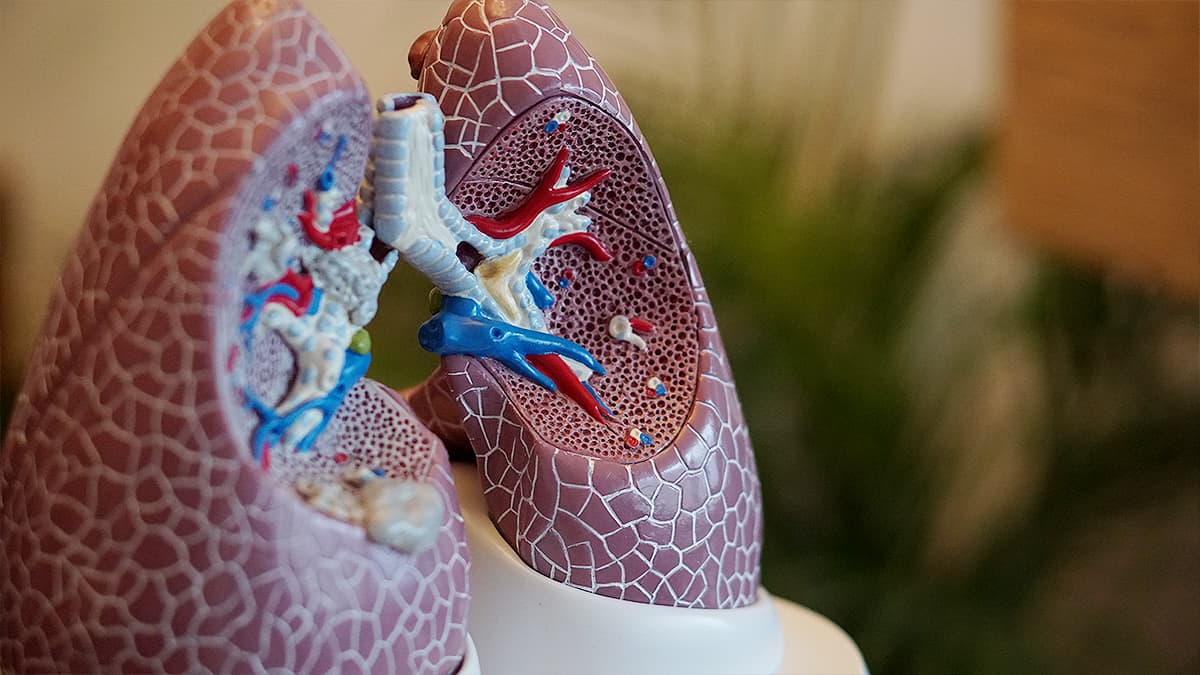Why are Asthma Inhalers So Expensive?
high drug prices

Like many routine prescription drugs and medications in the United States, the cost of asthma inhalers has skyrocketed in recent years. In just under a decade, the price of some of the most commonly prescribed asthma inhalers has increased by as much as 50% or more, far outpacing the average rate of inflation.
In addition to the cost of asthma inhalers, the Centers for Disease Control and Prevention (CDC) estimates that asthma accounts for over $80 billion in additional yearly expenses such as hospital visits, missed work and school, and serious health complications for people that avoid filling their prescriptions and taking the medication they need when asthma inhalers are too expensive.
Why Asthma Inhalers Are So Expensive in the United States
Unlike medications that are taken via injection or in the form of a pill, asthma inhalers consist of several moving parts that affect everything from patent rights to the manufacturing process — and ultimately how much they end up costing American consumers.
In addition to the drug itself, an asthma inhaler also needs a propellant agent to deliver the dose through the airway and into the lungs, in addition to the outer canister. According to the American Academy of Allergy Asthma and Immunology (AAAAI), there are three main types of asthma inhalers on the market:
- Metered dose inhalers (MDI)
- Nebulizers
- Dry powder inhalers (DPI)
Metered Dose Inhalers (MDI)
Metered dose asthma inhalers use a chemical propellant agent (typically aerosol) to "pump" the medication directly into the lungs. Examples of medications that utilize the MDI method include Dulera (mometasone/formoterol), Ventolin (in the form of albuterol), Salamol (salbutamol), and Qvar (beclomethasone).
In this case, the canister must be filled with the medication and then a mechanism must be used to push the medication out of the canister and into the patient's body. This is how many rescue (fast-acting) inhalers work, and also some long-term inhaled corticosteroids (such as Symbicort).
Nebulizers
Nebulizers work a little differently than MDI inhalers, though a pressurized canister is a commonality. In the case of nebulizers, the medication is delivered to the patient via mist through pressurized oxygen, typically through the aid of a mask that fits over the mouth and nose. This looks much like every other oxygen mask you may have seen on first responder shows or medical dramas.
These devices are most often prescribed for people who cannot use more traditional inhalers, such as infants, children, or very ill people who cannot suck in the air required to get medication into their lungs. The machine itself and corresponding equipment (mask, tubing, etc) can be used over and over again. Medication needs to be added when used.
In many ways, this is less wasteful than MDIs or dry powder inhalers, but nebulizers serve a different purpose and (with the exception of bronchodilators) are not typically used to administer the same types of medications — MDIs and dry powder mechanisms can administer multiple medications at once. However, nebulizers can be used to administer medication that the alternatives cannot, such as saline solution and antibiotics.
Dry Powder Inhalers (DPIs)
Dry powder inhalers sometimes look similar to MDI devices, but they don't use a chemical propellant to administer the medication. Instead, it's delivered to the lungs by taking a deep breath and inhaling the drug on your own. The most common dry powder inhalers include the Advair Diskus (fluticasone/salmeterol), Anora Ellipta (vilanterol/umeclidinium), and Breo Ellipta (fluticasone/vilanterol).
In this case, the Diskus and the Ellipta refer to two different designs of the device that holds the dry powder medication. Some sort of mechanism (usually a slide that clicks into place) releases a measured dose of medication, and then the patient inhales sharply and deeply in order to suck the medication into their lungs.
While pharmaceutical companies will use these various delivery methods, the mechanisms and equipment required to administer the medication, and the research and development behind them as reasons for the high cost of asthma inhalers, the reality of the matter is that this assertion is vastly overstated. It's not that they aren't factors in the equation — they are — just not to the extent that manufacturers would like you to believe.
Furthermore, every time a pharmaceutical company changes anything about the medication (such as developing a new administration technique, or tweaking the formulation of the medication), they can get a patent extension. Whether right or wrong, this helps them further justify their excuses for the exorbitant cost of the medication.
The Surprising Connection Between Climate Change, Government Regulation, Patent Protections, and Your Asthma Medication
At the end of 2008, the U.S. Food and Drug Administration (FDA) phased out the manufacture and sale of asthma inhalers that contained CFC propellants (chlorofluorocarbons). This decision was spurred by growing concerns over the negative effect that the industrial use of chlorofluorocarbons (primarily used in refrigeration and air conditioning units) were having on the ozone layer.
CFC inhalers were replaced with HFA (hydrofluoroalkanes) asthma inhalers. As U.S. pharmaceutical companies and drug manufacturers made the transition from CFC to HFA-based asthma inhalers, the costs of the new propellant increased and made it more difficult for consumers to save money on generic versions of common asthma inhalers like albuterol.
The transition to HFA inhalers led to a number of new patents for what was essentially the same drug — just a different propellant — which made it more expensive. Again, anytime a drug manufacturer changes something about the medication, they have a tendency to increase the price to make up for the research and development costs, and of course, pad their bottom line.
However, there's an additional complication that lies within the patent. Because the new medication has a new patent, the clock begins again. This is the countdown to when generic drugs can be developed that share a similar formula — and that clock is often 20 years or more.
For example, the popular asthma control medication Advair was developed in 1998 and approved for sale in the United States in 2001. It was groundbreaking at the time because it was the only medication that treated both major components of asthma: inflammation and bronchoconstriction. For decades, this medication was sold for hundreds of dollars as a Diskus. A generic was finally released in 2019.
The problem with switching from CFC inhalers to HFA inhalers was that the clock started over. Prior to the legislation, the CFC-based inhalers were essentially serving as a generic version of the drug for American consumers, keeping the costs of the inhalers in the U.S. fairly comparable to Canadian prices.
After the 2008 ban went into effect, prices continued to rise steadily in the United States compared to the cost of HFA-based asthma inhalers in Canada. According to the Journal of the American Medical Association (JAMA), the CFC inhaler ban in the United States resulted in an 84% increase in the price of albuterol.

Generic vs. Brand Name Asthma Inhalers
Generic drugs use the same active ingredients and are subject to similar safety and packaging standards as their more expensive brand name versions. As the patent on a brand name drug or medication expires, it opens up the market for generic versions of the same drug which can then lower costs for consumers. Of course, insurance companies typically prefer generic drugs over brand name, and therefore, the copay is lower in order to provide an incentive to consumers to purchase the generic.
But as previously mentioned, it can take years for the patent protection on a particular drug to expire — you have to wait for that clock to run out. While the general term of a new patent in the U.S. is 20 years, there are a number of factors that can affect the lifespan of a patent. Furthermore, drugs and medications are also subject to "exclusivity" agreements which vary depending on the drug type and category and can range from 180 days to seven years.
The patent process in the U.S. is extraordinarily (and at times, infuriatingly) complex, and by changing a single ingredient or component of a medication (like the propellant in the case of CFC inhalers), drug manufacturers can essentially rebrand and file new patents on what is essentially the same medication. This process makes drugs more expensive and delays the availability of more affordable generic versions of the drug for years or even decades.
The Hidden Costs of Expensive Asthma Inhalers
In addition to the direct health implications, unaffordable asthma medication has a trickle effect on many other aspects of people's lives, from quality of life for patients and their families, to the economy, as well as surrounding communities due to lost productivity and secondary healthcare costs.
According to data compiled by the U.S. National Library of Medicine, National Institutes of Health, asthma-related school absenteeism was more likely among children with poorly managed or untreated asthma. Unsurprisingly, the children who missed school due to asthma symptoms or flare ups were also found to have higher rates of emergency room and urgent care visits. Affordability was found to be one of the main factors in undertreated asthma along with environmental triggers like mold.
With approximately one in 12 children in the U.S. suffering from some form of asthma, absentee rates account for over ten million missed school days per year. Predictably, asthma-related school absenteeism has also been associated with lower academic performance.
Of course, all this missed school and lower academic performance doesn't help with college acceptance or scholarship rates. If children are unable to keep grades up, they won't be afforded the same opportunities as their peers who haven't had the same health challenges growing up.
Although Americans are also being crushed under the weight of student loan debt, evidence still shows that a college education increases earning potential over a person's lifetime. Someone with a Bachelor's Degree is likely to earn about one million dollars more than a person with a high school diploma throughout their working life.
The education gap also contributes to the healthcare gap. People who hold Bachelor's Degrees are 47% more likely to have health insurance (not compulsory in the U.S.) than their high school diploma-holding counterparts. Having access to healthcare will also help them manage their asthma on a long-term basis, which should make asthma attacks less likely, and prevent further health complications down the road.
Furthermore, their employers contribute 74% more to their health coverage, which allows them to keep more money in their pockets. Not only do these factors contribute to the long-term financial stability of the individual, but it also affects the amount of discretionary income they have on a regular basis, which will affect the economy.
According to research conducted by the American Thoracic Society, "missed work and school days combined cost $3 billion per year, representing 8.7 million workdays and 5.2 million school days lost due to asthma," while "asthma-related mortality cost $29 billion per year, representing on average 3,168 deaths."
Another unsurprising piece of information from this dataset also pointed out that people without health insurance experienced lower out-of-pocket asthma-related expenses than their insured peers. What is unclear is precisely why. While one might surmise that these people are less likely to seek medical treatment (which is undoubtedly part of the equation), another factor may be that they're on Medicaid, which is the social health insurance program for severely underserved communities. Medicaid would ensure that out-of-pocket costs are lower than with more traditional American insurance.

Secondary Health Risks of Untreated or Under-treated Asthma
In addition to the primary symptoms of the condition, asthma sufferers also have to deal with secondary health and quality of life problems that can also lead to serious health risks and complications — and higher medical bills.
In the United States in particular, where obesity is already a national health crisis that accounts for billions of dollars in healthcare costs each year, children and adults with asthma are particularly vulnerable to weight-related health issues. Obesity is also considered a significant factor in the development of asthma.
Other potential health side effects of inadequate physical activity and asthma include:
- Greater risk of diabetes
- High blood pressure
- Sleep problems
- Greater risk for depression
- Developmental issues in children
For profit-motivated drug manufacturers and people who aren't affected by asthma, expensive asthma inhalers may seem like nothing more than business as usual. But for people living with asthma, not being able to afford an inhaler can have a snowball effect on their individual health, families, employers, and communities. All of this can lead to very serious consequences.
As the data has shown, expensive and unaffordable asthma inhalers can result in people foregoing their medication or taking less of it than prescribed (perhaps one per day instead of twice). Under-treated asthma can then lead to billions of dollars in extra healthcare costs and lost productivity to the economy.
According to research from the American Thoracic Society, the average yearly per-person cost of asthma-related healthcare in the United States over the past decade is more than $3,000, over half of which is for prescription medication and asthma inhalers ($1,830).
Additional cost estimates include:
- $640 for annual office visits
- $529 for hospitalizations
- $179 for outpatient hospital visits
- $105 for emergency room care
The researchers pointed out that the cost estimates from their studies didn't account for untreated asthma and the related expenses, so the total costs are likely much higher than the estimated $80 billion yearly total provided by the CDC.
Long-term Health Risks of Untreated or Poorly Treated Asthma
In addition to the generally lower quality of life and secondary health problems associated with untreated and poorly managed asthma, not being able to afford asthma medication can lead to permanent lung and bronchial tube damage.
According to the American Lung Association, airway remodeling is a serious condition that results from poorly managed or untreated asthma. Over time, untreated asthma-related inflammation can lead to scarring and thickening of the lining of the airway, making it harder to breathe and making asthma inhalers less effective.
Airway remodeling is largely preventable by reducing the number and severity of flare-ups. Asthma creates a very sensitive environment in the lining of the lungs, leaving swollen tissue and redness commonly associated with inflammation. Because this inflammation is already present, people with asthma can experience more serious symptoms as a result of everyday triggers, such as upper respiratory infections, allergens, weather shifts, or chemicals.
Each time an asthmatic is triggered, the inflammation in the lining of the lungs gets worse, narrowing the space and increasing the risk of another attack in the days afterward as the swelling subsides. It's these types of situations and conditions that foster an environment in which airway remodeling can occur, causing irreversible damage to the lungs.
The way to prevent such damage from occurring is to avoid triggers and monitor the condition closely. However, if the asthmatic doesn't have access to the information or medication necessary, they won't be able to manage their symptoms and prevent an attack.

Why Asthma Inhalers are Cheaper in Canada and Elsewhere
As healthcare costs and prescription drug prices continue to climb beyond the reach of millions of Americans (even with health insurance coverage), more and more people look to other countries, like Canada, for affordable access to essential medications. While American citizens have been crossing the border into Canada for years to buy more affordable prescription drugs, Canadian pharmacists have noticed a "quiet resurgence" of the practice in recent years according to the CBC.
In Canada (and many other countries), the government regulates the costs of patented medications and sets price limits to keep drugs affordable. Unlike in the United States — where prices are set by the drug companies and can vary wildly depending on patent terms and profit markups — Canadian prescriptions remain relatively more affordable because there are limits to how much the drug companies are allowed to charge.
Another myth, happily propagated by pharmaceutical companies, as to why Americans pay more than everyone else (or so it would seem) for prescriptions is that their markup is higher to make up for the fact that most countries restrict the profit margin. In other words, some people believe that the pharmaceutical companies can't be profitable in other countries, and therefore, they increase prices in America to make up for it.
The truth of the matter is that pharmaceutical companies charge exorbitant amounts of money for drugs in the U.S. simply because they can. American consumers end up paying as much as ten times or more as their Canadian counterparts for the same medication due to a lack of price controls and regulation in the United States. Not only are American drug companies allowed to set unlimited prices for patented drugs, making life saving medications like asthma inhalers unaffordable for millions of patients, but they add another layer to the problem by also trying to restrict access to cheaper generic versions of the drugs.
For American consumers looking to find cheaper versions of asthma inhalers in Canada or other countries, like the Flovent HFA inhaler, Advair, and generic fluticasone, knowing what to look for in a safe and reputable online Canadian pharmacy and international drugstore is the first place to start. They can rest assured by the knowledge that Canada has stringent safety standards and drug approval protocols for prescription medications like asthma inhalers.

What a Flovent HFA and Advair Asthma Inhaler Costs in Canada
In the United States, a Flovent HFA asthma inhaler currently costs over $200 for 10.6 grams, with no generic alternative available. Because patents are issued at various stages of the development cycle of a drug and for different components (like the propellant in the case of asthma inhalers) all with different expiration dates, it can take years for an affordable, generic alternative of the same medication to become available in the United States.
In Canada, a Flovent HFA asthma inhaler costs less than $50. So Americans are paying more than quadruple the price for the same medication.
Advair is very common among asthmatics because of its dual function in treating both inflammation and bronchoconstriction. In the United States, the price can range from $300 to $600 per inhaler, which is one month's worth of life-saving treatment for an incurable condition. While some people are able to get Advair for the price of a copay (perhaps $25 to $50), people who are enrolled in high deductible health plans (HDHPs) will need to pay that entire retail amount, or perhaps a slightly smaller amount through mail-in orders.
While a generic version has finally been approved for American consumers after years of setbacks and delays due to patent disputes, American prices still remain prohibitively expensive for many asthma patients, with or without insurance.
By comparison, similar dosage of Advair Diskus and generic fluticasone inhalers range from $50 to $70 in Canada or internationally.
What Expensive Asthma Inhalers Really Cost
The total costs of unaffordable asthma medication and the additional expenses that go along with it can be hard to predict and vary from person to person and family to family. The numbers presented by the CDC are only estimates and don't account for the fact that many families have more than one child or family member suffering from asthma.
To some extent, asthma is genetic. Although asthma is not always tied to genetics, a person is more likely to develop asthma if a family member also has it, such as a parent or grandparent. This makes it more likely that the CDC numbers are low.
Additionally, the CDC estimates that four out of ten American adults suffer from more than one chronic illness, making healthcare and medication costs even more essential — and yet, both remain unaffordable and out of reach for many vulnerable people. According to the Asthma and Allergy Foundation of America, approximately ten Americans die from asthma complications every single day, most of which are avoidable with proper management and access to necessary treatment and affordable medication.
If the average price difference between a Flovent HFA inhaler between the United States and Canada is $150 per inhaler, with the average inhaler lasting 60 days depending on the prescribed dosage, that's a savings of $900 for a year's supply for one person. If your doctor recommends a higher dosage or there are multiple asthma sufferers in the family with the same prescription, you're looking at thousands of dollars for the inhaler alone.
Navigating prescription drug costs is almost always stressful and overwhelming. At NorthWestPharmacy.com, our goal is to help you save money on your prescription medications. Our customer service team is available to answer all of your questions and to give you peace of mind throughout the entire process. Truly, we're more than happy to talk on the phone — we can walk you through your order and help you with whatever you need.
For more information, you can call us toll free at 1-866-539-5330 or contact us online.